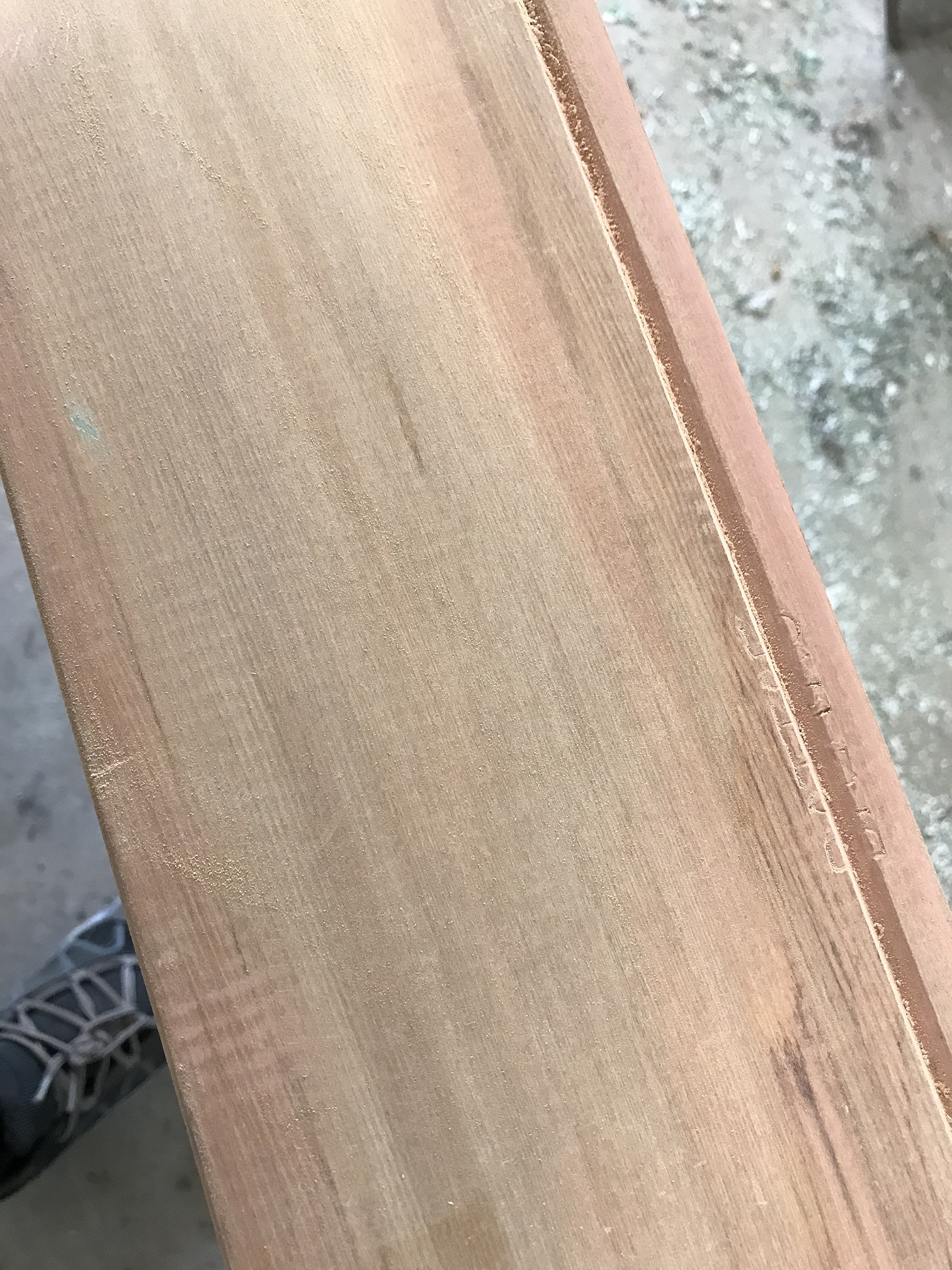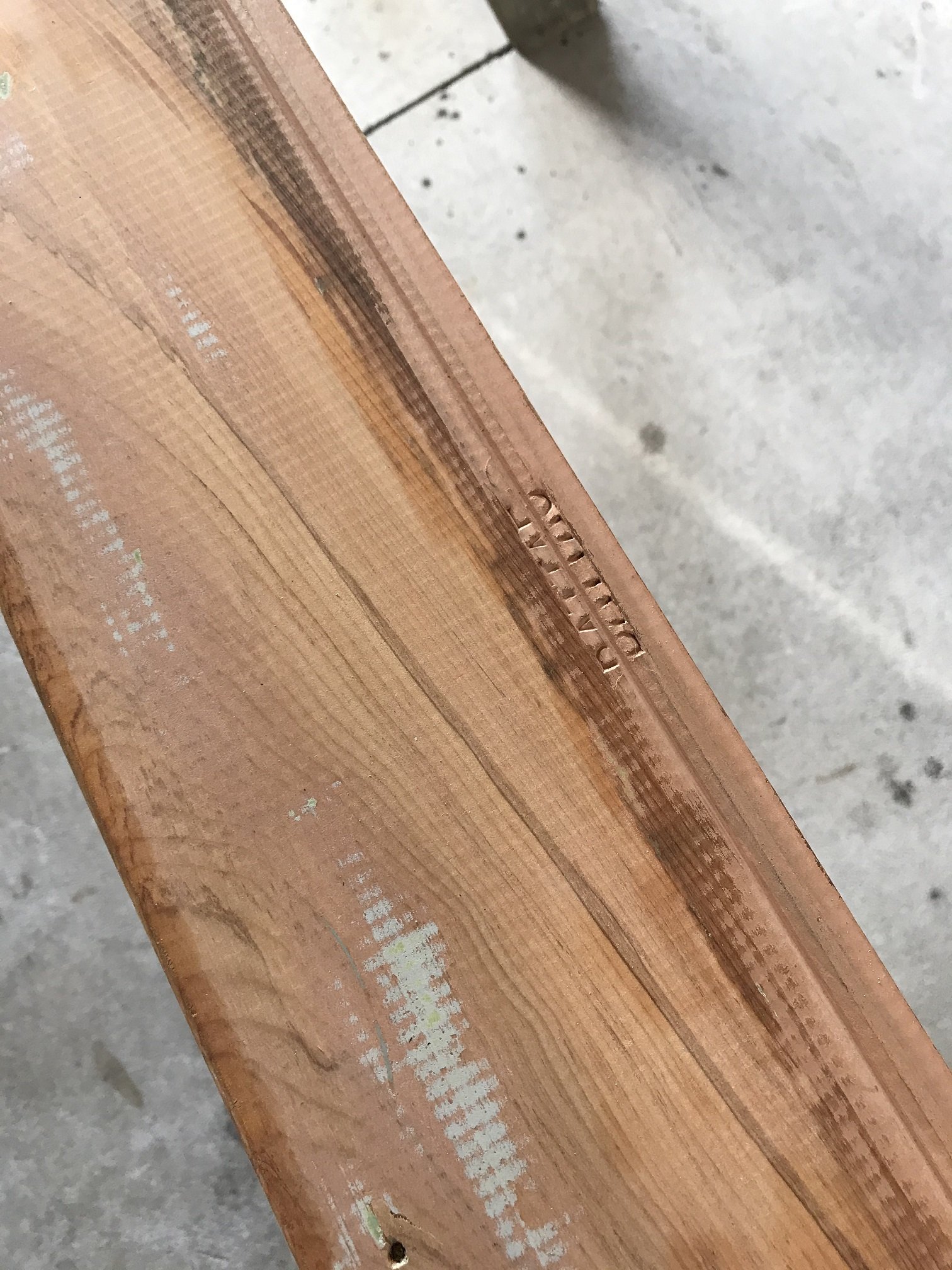Hello helpful internet friends.
Is it possible to tell what type of timber this cladding is made from by sight? I am interested to know if this is a native timber.
Thanks!


|
|
Bit hard to tell from photos but judging by the colour and grain pattern, it looks like rimu.
Sometimes I just sit and think. Other times I just sit.
eracode:
Bit hard to tell from photos but judging by the colour and grain pattern, it looks like rimu.
And thus probably worth a small fortune if it's cladding the whole house.
cshwone:
eracode:
Bit hard to tell from photos but judging by the colour and grain pattern, it looks like rimu.
And thus probably worth a small fortune if it's cladding the whole house.
Tell us more. Is this exterior cladding and if so, is it the whole house? Interested to know why you are asking about timber type. As far as I know, rimu wasn't ever really used as a cladding timber (assuming it is in fact rimu).
From the photos, it looks reasonably new - doesn't look like what we might expect old house cladding to look like. However we can see what appears to be an old nail hole. Looking at the markings, paint remnants, dust etc - has it recently been machined? What are the stamped markings?
Sometimes I just sit and think. Other times I just sit.
Bung: There would be 1000s of State house era weatherboard houses with Rimu framing and weather boards. It took time for the radiata pine to come on stream. Immediately after WW2 kitset timber houses were imported from Austria to fill some of the demand. More recently in the mad rush to cut Rimu on the West Coast before logging was stopped, some sawmills were supplying Rimu cheaper than other mills could supply pine.
Thanks - I stand corrected - didn't know that (about the state houses). Interesting because rimu is relatively difficult to work with - hard and can splinter or crack with nails etc - heart rimu at least.
Sometimes I just sit and think. Other times I just sit.
Bung: My neighbour did a major renovation and found it quicker (cheaper) to rebuild some walls rather than try to true up the old Rimu. He kept it for ages intending to reuse it for something. Then I got it and tried to find a use for it but in truth most was full of knots, resin splits or borer.
I did get some usable Rimu 4x2s from old wirewove bed bases and the firewood pile at the wgtn tip recycle shop had a lot of broken furniture with decent Rimu panels hidden under paint.
What did you use it for?
Sometimes I just sit and think. Other times I just sit.
eracode:
Tell us more. Is this exterior cladding and if so, is it the whole house? Interested to know why you are asking about timber type. As far as I know, rimu wasn't ever really used as a cladding timber (assuming it is in fact rimu).
From the photos, it looks reasonably new - doesn't look like what we might expect old house cladding to look like. However we can see what appears to be an old nail hole. Looking at the markings, paint remnants, dust etc - has it recently been machined? What are the stamped markings?
Thanks all for your replies so far :)
OK so the backstory...
Short version:
Pulled this weatherboard out of a skip up the road to potentially replace some rotten wood on my own house. Stripped it back to to almost bare wood and wanted to know if it is a native timber as for some reason I feel better about replacing the existing native timber cladding with native over new Bunnings pine.
TMI version:
Me: 2/10 skill level when it comes to home DIY but looking to get that to a 3/10, hence now a member of this forum seeking help!
My House: 1960's built ex state house in Auckland. Native timber floors and joists (Matai), native timber framing (unknown, but based on a builder saying that it was native).
My assumptions: My house has native timber weatherboards of some type. Native timber weatherboards are worth saving / preserving over replacing with pine cladding from Bunning's.
So my fist DIY task was to fix up some bubbling paint on the exterior north facing side of the house (I have an earlier post about that) and currently doing what I can to prep and learn some basics as I wait for the hardware stores to open to the public.
During that process I found that there were a few weatherboards that were rotten around where an external stair stringer had butted up against the side of the house. Obviously water was getting trapped and overtime rotted the wood on both the stringer and the weatherboard. Previous owner had just poly-fillered it and painted over..
So, after some consideration, I decided I will replace the weatherboards (lucky they are the two lower ones so hopefully wont be too hard to remove) and given they were relatively short lengths (about 2.5 mtrs) I decided I would rather replace the whole boards to avoid having joints in an otherwise clean line of boards.
But then I starting to think that it would be a shame to replace the (assumed) native timber with pine unnecessarily, so maybe better to just replace a smaller section of each with pine to preserve the rest of the native timber and just deal with having a join plate on the two boards.
Then the other morning, I was out for a early run around the neighborhood and I just happened to notice a bunch of weatherboards sitting on top of a roadside skip out front of a house of similar period as mine that was being extended. Later on that day I decided I would go and grab a few lengths to see if they could be used on my house. They seem to be the same profile of mine and after scraping back 5 layers of paint they seem to be in good condition.
So the pics are after I have taken off the paint. The second pic looks a bit darker as this was taken not long after wiping back the board with a damp cloth so not quite dry yet. The first pic was taken after sanding but before wiping down.
The marking stamped into the pic is DATTA5 or it might be BATTA5.. I googled both and found no results.
Feedback welcome :)
Thanks
|
|
